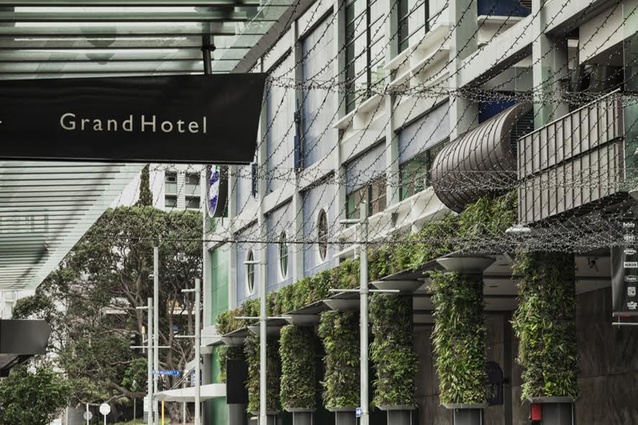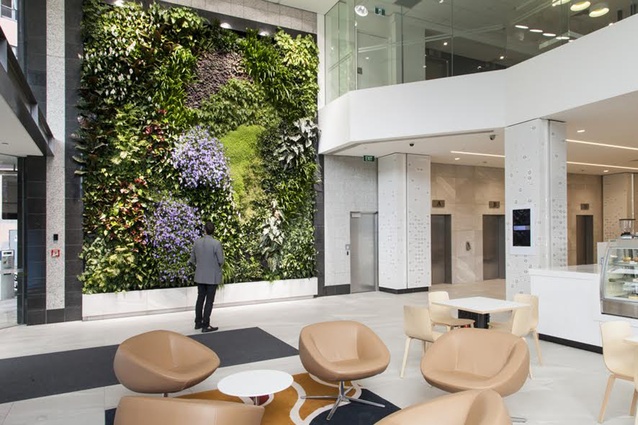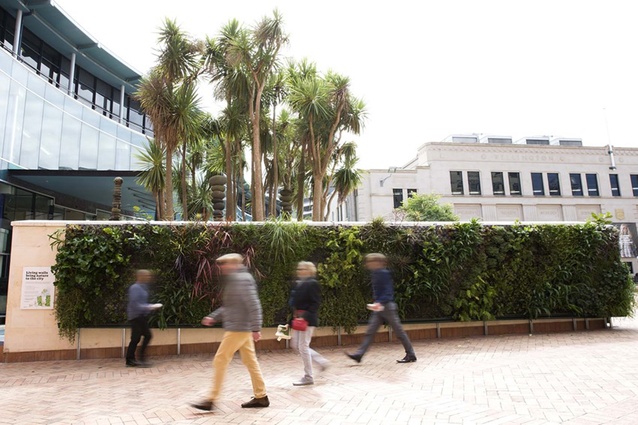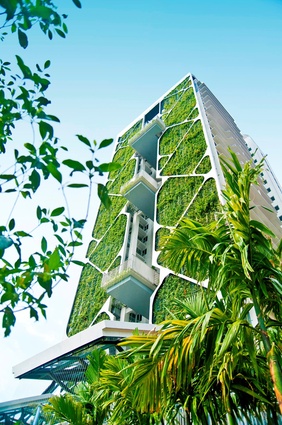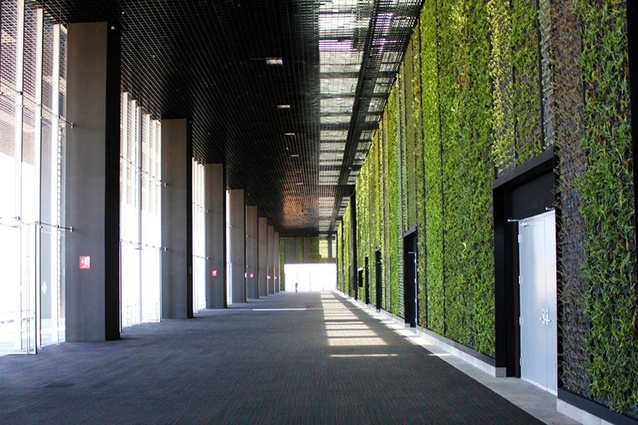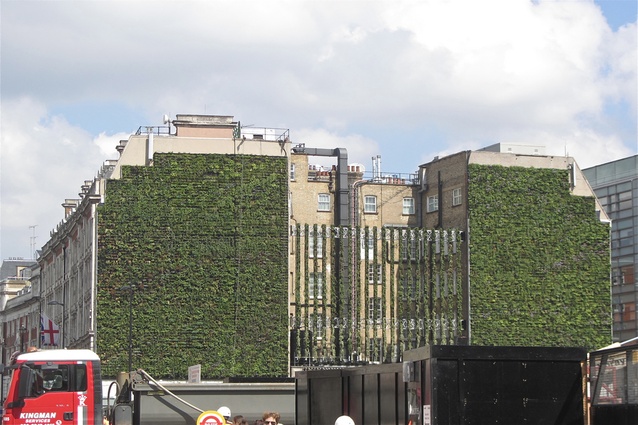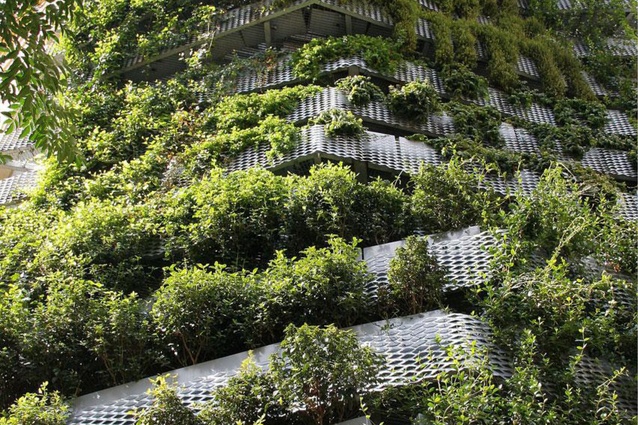It’s a (concrete) jungle out there
While not a new idea, the installation of living walls and roofs into the urban space has only increased in popularity across New Zealand and the globe in recent years. With growing concerns about the impact and side effects that our urban environment is having on the planet and on our health and wellbeing, green walls are both aesthetically pleasing and have a wide range of unique benefits.
Simon Chamberlain, managing director of GreenAir comments, “green walls have many benefits such as improving air quality, acting as a insulating layer on walls and reducing energy costs, sound absorption and lowering noise pollution, and even adding to property value.”
He continues, “however, one of their best and most appreciated features is an aesthetic one. People enjoy seeing greenery in their environment, it brings the real world into the cityscape and gives people a feeling of being grounded in nature.”
Several links to research on the benefits of green walls can be found at the end of the article.

New Zealand’s first green roof was the Quay West roof garden in Auckland in 1994, while our first living wall was installed in a Takapuna, Auckland hair salon in 2009, both by Natural Habitats. A well-known, more recent Natural Habitats project in Auckland is the green wall in the Atrium on Westpac in the Britomart precinct, which was installed in 2011. The living walls line the east and west end walls and integrate seamlessly into the building fabric.
The SkyCity/Federal Street living wall is a project by GreenAir in collaboration with Australian firm Fytogreen and landscape architects Boffa Miskell that features the first circular green walls in the southern hemisphere. Built in May 2014, it is the largest external green wall in New Zealand (130m2 and 48 metres long), and features a staggering 3, 500 different plants, more than 80 percent of which are New Zealand natives.
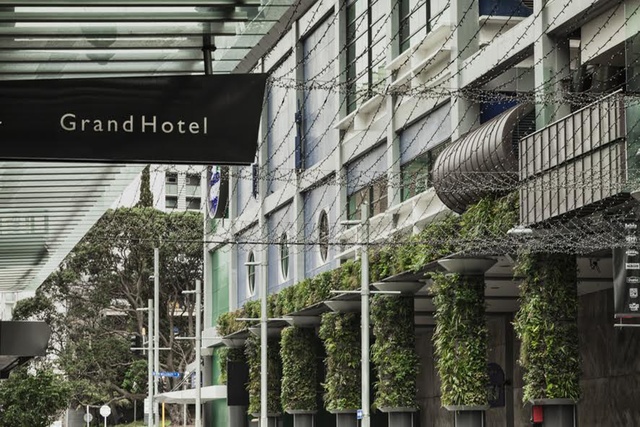
Wellington has recently got involved in the living wall phenomenon. In February 2015 the Wellington City Council installed a 24m2 living green wall in Civic Square. It contains mostly native plants that are irrigated and fertilised through an internal system. The plants were chosen to match Wellington’s climate and include Acaena Novae Zelandiae (piripiri), Arthropodium Te Puna (rengarenga lily) and Fuchsia procumbens (creeping fuschia).
While the uptake of green roofs in New Zealand has been relatively slow compared to the rest of the world, Te Kaitaka, or ‘The Cloak’ is situated near Auckland Airport and shows what can be done with the concept. Fearon Hay Architects have constructed a living green canopy of native plants that sprout from the contoured roof, which camouflages and links the roof into the surrounding natural landscape of coastal flaxes and grasses. The green roof was developed by New Zealand company Stormwater 360, and acts as a natural air conditioning unit, with the plants providing evaporative cooling, as well as assisting with insulation in the cooler months.
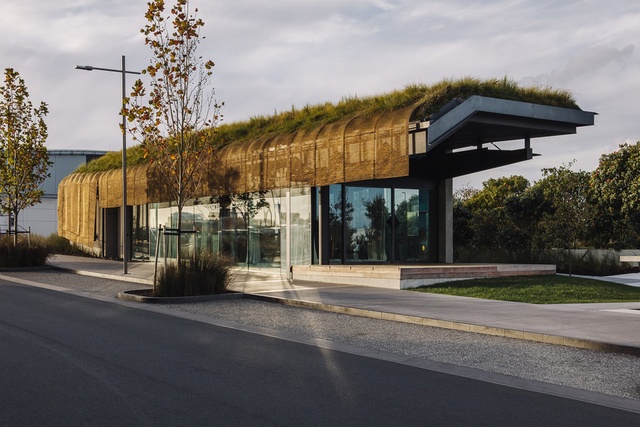
Looking overseas to our Australian neighbours, one of the most impressive living walls today is One Central Park, part of an ‘urban village’ in downtown Sydney. It was designed by one of the original creators of the living wall, French botanist Patrick Blanc, alongside Parisian architect Jean Nouvel. Completed in 2013, One Central Park reaches up to the sky at 166 metres, with its green facade exhibiting 250 species of native Australian flowers and plants. Abundant vines and foliage intertwine between each floor, in a vertical continuation of the park below.

With much of the world’s population now living in cities, rising temperatures and the endless proliferation of concrete structures surrounding us, the desire and need to have open spaces, green areas and a better connection with nature is only growing stronger.
Aside from aesthetics, among other benefits living walls improve air quality, manage stormwater volume and lower greenhouse gas emissions. They encourage sustainable urban development and create an oasis within the concrete jungle. Let’s hope we see more of these across New Zealand as we embrace the concept of urban vegetation.
Various projects and studies been undertaken on the benefits of living walls and roofs. The Yale Project, Staffordshire University’s International Green Wall conference, the Growing Green Guide and the Green Infrastructure Research Group at the University of Melbourne are just a few source examples of this research.



